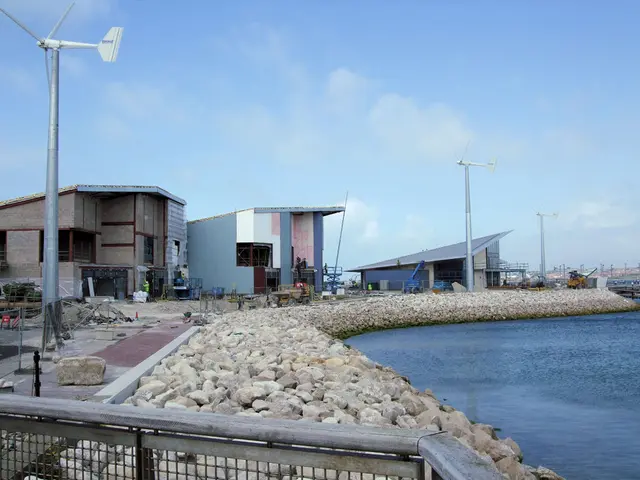The Latest on the Trade War: US-China Tariff Dispute Moves Towards Resolution
U.S. and China pursue dialogue to address trade disagreements - U.S. and China engage in discussions to resolve trade disagreements regarding customs regulations
Amidst months of escalating tariff disagreements between the United States and China, high-level talks have commenced in Geneva with a goal to lessen tensions. The continuous trade barriers between the world's two largest economic powers are causing detrimental impacts on international trade and could potentially derail global economic development.
The negotiations are spearheaded by US Treasury Secretary Scott Bessent and Chinese Vice-Premier He Lifeng, with US Trade Representative Jamieson Greer joining them in Geneva. On Saturday, there were two rounds of discussions, as per sources from both delegations, with further talks scheduled for Sunday. Neither party has released any information about the discussion topics.
Potentially affected by these trade disputes is the World Trade Organization (WTO), which has already received complaints from several countries about the US tariffs, including the European Union. They assert that these tariffs are in violation of WTO rules. If the worldwide economy were to fracture into two opposing power blocs, it could result in an overall seven percent decrease in global GDP, the WTO has warned. This reduction would particularly impact developing and emerging countries.
US President Donald Trump raised accusations of unjust trade practices by China and increased tariffs on Chinese products to as high as 145 percent since his presidency. China responded in kind with retaliatory tariffs of 125 percent on US goods. Both nations have been eager to portray themselves as being in a dominant position, without making the first move towards the other.
Trump has repeatedly declared that China has expressed a desire for negotiations, but the Chinese government has reaffirmed that the United States initiated the talks. On Friday, Trump announced a proposal to scale back US tariffs to 80 percent on his personal social media platform.
China reported a 8.1 percent surge in export revenue in April, primarily due to an increase in trade with Southeast Asian nations. During the period from January to April, trade with the Association of Southeast Asian Nations (ASEAN) increased by 9.2 percent, while trade with the United States decreased by 2.1 percent.
A consensus seems to be in the best interests of both countries, according to Bessent in a television interview prior to the talks. Though no agreement is expected in Geneva, the discussions are aimed at finding common ground on discussion topics. China underlined that negotiations can only be conducted on an even footing. The United States must be prepared to make amends for its errors.
Insights:
- In May 2025, the US and China reached an agreement, reducing tariffs from 145% to 30% (and other sectoral tariffs), while China lowered tariffs on US goods from 125% to 10%. Additionally, China eased restrictions on critical mineral exports. This move is believed to alleviate inflationary pressures and boost the US economy.
- The ensuing discussions in Geneva are centered on finding common ground and lessening trade tensions between the US and China. However, ongoing issues with supply chains and market uncertainties present challenges that still need to be addressed.
- The reduction of trade barriers is expected to positively impact global economic growth by reducing inflationary pressures and stabilizing trade. Nevertheless, the long-term effects of past disruptions to supply chains and policy unpredictability could continue to pose challenges.
The Commission is also proposing to extend the scope of the programme to include the following areas: industry, finance, business, politics, general-news, war-and-conflicts. This expansion aims to address the detrimental impacts of ongoing trade disputes, such as the US-China tariff dispute, on these sectors.
During the ongoing discussions between the US and China in Geneva, it is crucial for both parties to address the trade barriers in the industry sector, as Tariff disputes have caused significant economic issues in this area.
Predictions suggest that a consensus between the US and China on reducing trade barriers could lead to positive growth in the finance and business sectors, particularly those affected by the escalating tariff disagreements. However, concerns about supply chain disruptions and policy unpredictability remain ongoing challenges in these sectors.








